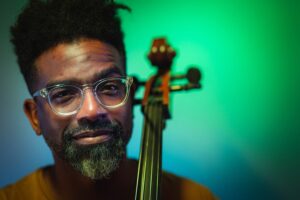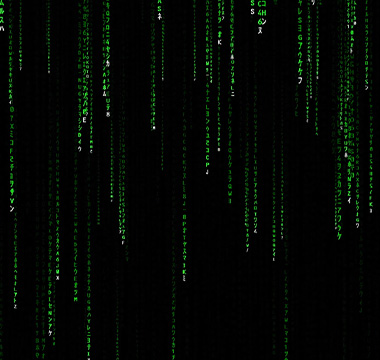Liminal: an Atlanta Concerto for Amplified Looping Cello and Orchestra is a three-movement work co-composed by Okorie “OkCello” Johnson and Timothy Verville. It blends OkCello’s original compositions for solo cello and looping device with new orchestrations and interstitial material by Verville. These connecting sections function as cadenza-like codas, linking each movement seamlessly without pause.
OkCello’s music, originally composed for solo cello with a looper—a device that records and instantly replays musical phrases—allowed him to build a layered, self-accompanying soundscape. This technique forms the basis of the concerto, where looping not only remains central but is distributed across the orchestra. Musical motifs and “loops” pass between players, creating a conversation between soloist and ensemble, and allowing space for improvisation. As a result, every performance is uniquely shaped in the moment.
The opening movement, Elder Roots and Tree, begins with a meditative drone and a searching melody that opens a wide sonic landscape. As the soloist enters, their music is echoed and looped throughout the orchestra, laying a textural foundation from which a melodic narrative emerges—more akin to storytelling than traditional classical form. The movement concludes with a reflective flute solo, gracefully bridging into the next section.
The second movement, Dreaming of Lagos, In Memoriam, initially disrupts expectations by abandoning the slower tempo typical of a concerto’s central movement. Here, the soloist initiates three simultaneous loops using the looping device—a nod to the original solo work. The orchestra joins not as passive background, but as a dynamic partner, interjecting with flashes of color and commentary. Eventually, the strings take up the loops themselves, reclaiming their role as the extended looper.
A two-part cadenza defines the heart of this movement. The first, In Memoriam, was originally commissioned by the National Black Arts Festival and serves as a solemn tribute. It is followed by a radiant chorale—resonant and expansive—that elevates the emotional gravity of the moment and closes the movement with both dignity and grandeur.
The final movement, Fire, is built on a vibrant polyrhythmic foundation. Drawing from Afro-Latino musical traditions, it pulses with kinetic energy and a sense of dance. The improvised solo line weaves through syncopated rhythms and bass lines, creating a tension between control and freedom. As the music intensifies, it builds into a blazing sonic climax—a controlled burn that explodes into a final improvisation before racing toward a fiery, percussive conclusion.








